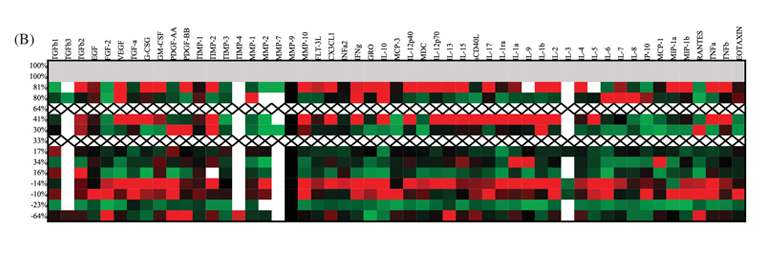Jun 23

Toward Better Wound Healing
It’s not pretty, and its name is a turnoff. But a venous leg ulcer (VLU) should be taken seriously, because of the consequences if it doesn’t heal. Improved treatment of such wounds could enormously benefit the 1% of the global population who suffer with a VLU, says Judith Fulton, Ph.D., senior research scientist at Northeast Ohio Medical University.
Better therapeutics could also be a balm to the health care system: Currently, total Medicare spending for VLUs in the U.S. is estimated at somewhere from $720 million to up to $1.5 billion annually, according to research recently published in International Wound Journal.
First, what is a venous leg ulcer?
Get ready. It’s a large open sore usually found between the knee and the ankle, and it often oozes or “weeps.” There’s a long list of conditions that can cause such an ulcer.
The problem comes when these painful red ulcers don’t heal on their own, says Dr. Fulton. Therapeutic products are on the market, but there’s more to learn about each one’s particular strengths. Dr. Fulton and a team of researchers affiliated with the SerenaGroup, a global health care company that focuses on wound healing, researched one of the products currently on the market to investigate what combination of symptoms would be best served by it.
“I was excited about the idea of being able to match each product to different combinations of wound symptoms, to see which therapeutic would work best in different situations,” said Dr. Fulton. Although a planned series of similar after-market research studies on comparable products didn’t come to pass, due to changes at the SerenaGroup, the results of the research conducted by Dr. Fulton and the rest of her team has now been published.
In the article “A prospective clinical trial evaluating changes in the wound microenvironment in patients with chronic venous leg ulcers treated with a hypothermically stored amniotic membrane” published in the open-access International Wound Journal, Dr. Fulton and the team detail their findings.
A hub for collaboration
A REDIzone research scientist at NEOMED since 2019, with nearly 25 years’ previous experience as a researcher at Cleveland Clinic Akron General, Dr. Fulton currently manages the Pharmacy Proof of Concept Center laboratory and assists REDIzone clients with a wide variety of research projects.
As a client and resident of the REDIzone – a life science incubator on the NEOMED campus – the SerenaGroup had full access to the tech transfer guidance and research commercialization expertise of REDIzone manager Elliot Reed, J.D., M.B.A.
Read the International Wound Journal article by Dr. Fulton and her colleagues.
Photo: This heat map developed by Dr. Fulton illustrates the changes in cytokine concentrations within wound exudate of venous leg ulcers relative to baseline values at two weeks.


